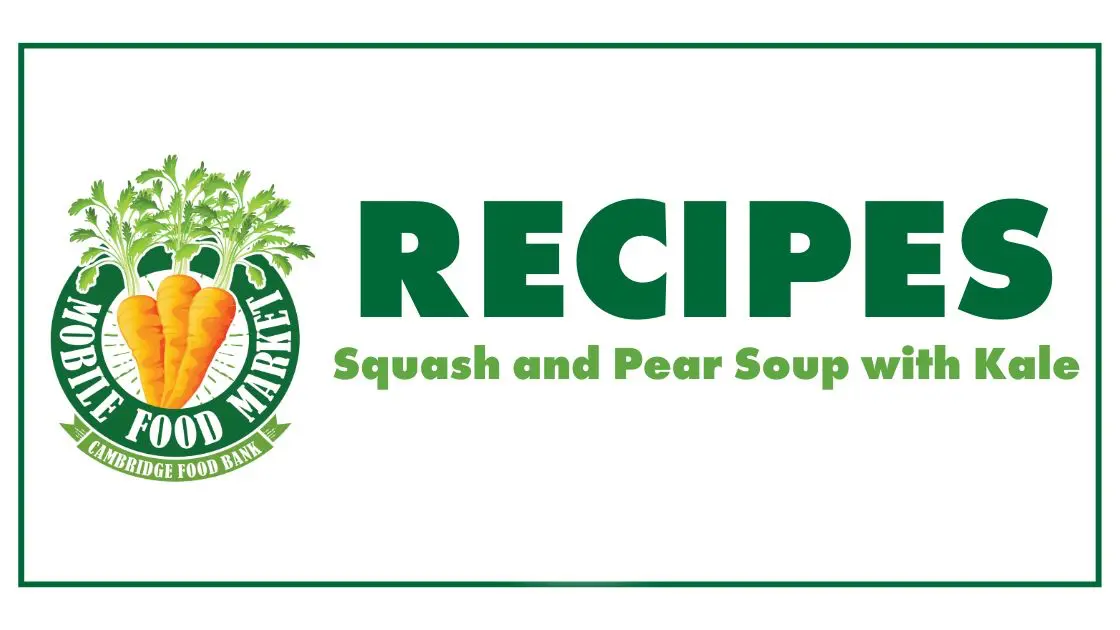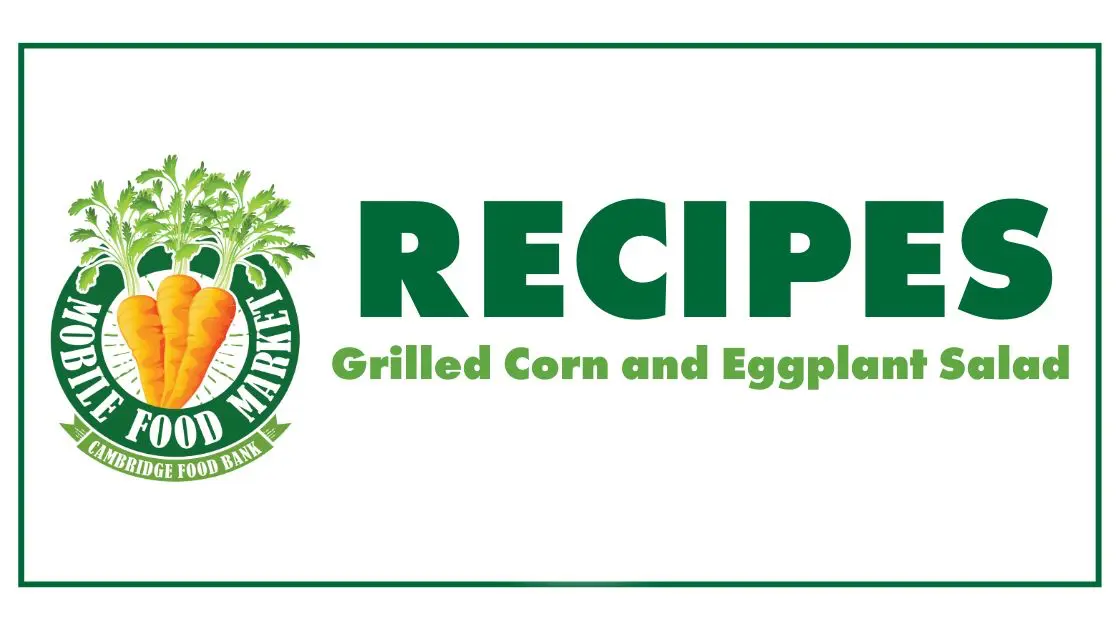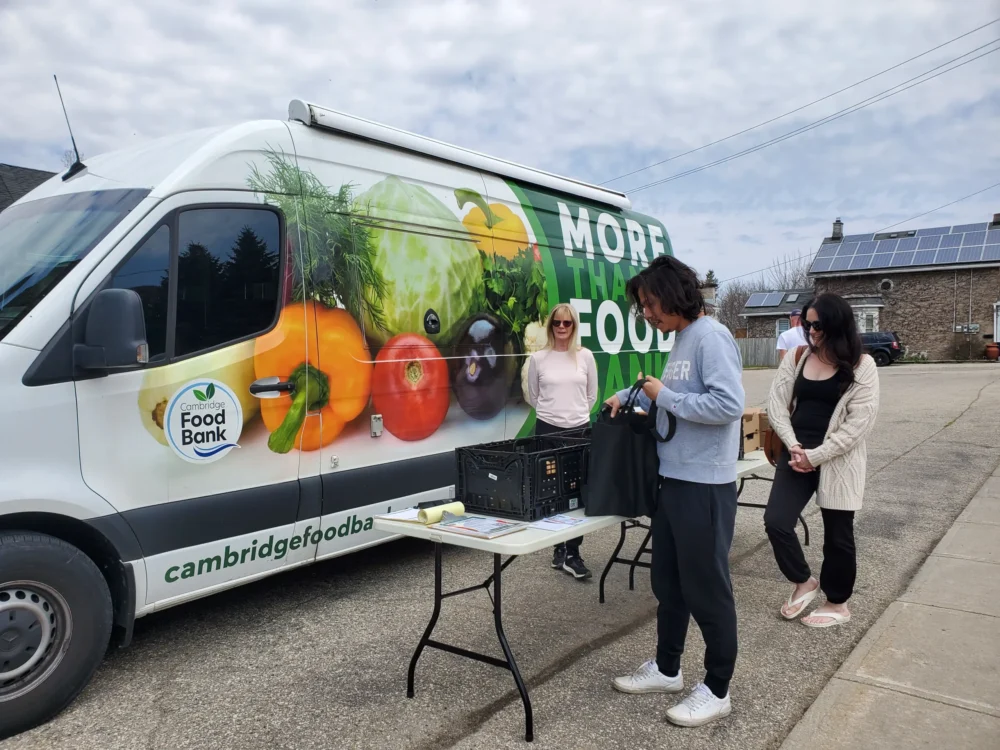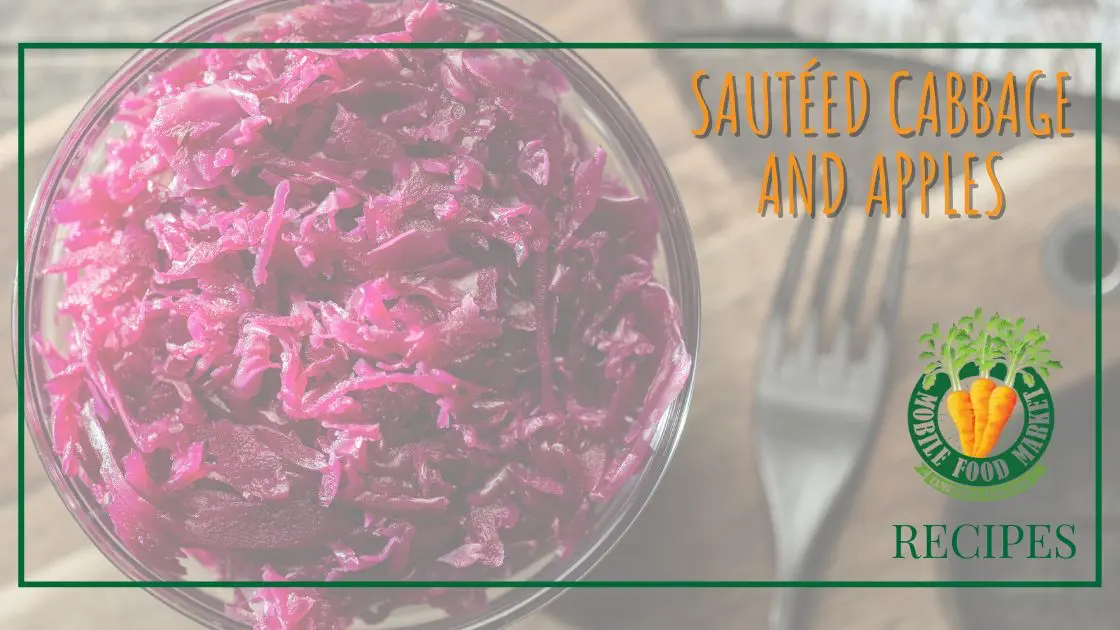Category: Mobile Food Market

Squash and Pear Soup with Kale
This Slightly Sweet and Hearty Soup will get you in an Autumn Mood
Serves 4 with Leftovers
Ingredients:
- 1 Butternut Squash
- 3 Tbsp Cooking Oil
- 1 Leek, rinsed and finely chopped
- 4 Cloves of Garlic, peeled and minced
- 2 Tbsp Ginger, Grated or Minced
- 2 Large Pears, washed, core removed and cut into quarters
- Vegetable or Chicken Stock
- Salt and Pepper to Taste
- 4 Kale leaves, removed from the Stem and Roughly Chopped
- 1/3 Cup Milk or Heavy Cream (Optional)
- 1 Tbsp Maple Syrup (Optional)
Directions:
- Heat oven to 375 degrees. Place squash on a sheet pan and roast whole for 30-40 minutes, until it’s softened. Remove and set aside to cool. Once it’s cool enough to work with, cut in half, remove and discard the seeds and scoop the flesh out of the skin, into a bowl to reserve.
- Warm oil in a large saucepan over medium heat. Add the leek and garlic sauté for 3-5 minutes, until soft and translucent. Add the ginger and sauté for 1-2 more minutes, stirring regularly so the ginger doesn’t burn.
- Add the squash and pears, then enough stock to cover the vegetables and bring to a boil. Add some salt and pepper, reduce heat to leave at a simmer, and cook for at least 15 minutes, until the pears are tender.
- Let the soup cool slightly, then puree. You can either do this in batches in a blender or with an immersion blender until smooth.
- Add milk or heavy cream and maple syrup, if using, and stir to mix. Add the kale and bring the soup back to a simmer, cooking for another 10 minutes until the kale is wilted. Taste, seasoning further with salt and pepper if needed. Serve with fresh bread and butter. Enjoy!

Grilled Corn and Eggplant Salad
A Delicious Summer Salad You Can Make on the Grill or in the Oven
Serves 4
Ingredients:
- 4 Cobs of Corn, shucked
- 2 Jalapeno Peppers
- ½ Red Onion, peeled
- 1 Eggplant, cut in half
- 3 tbsp Canola or Olive Oil
- 1 Lemon
- 2 Tomatoes, cored and cut into bite-sized pieces
- Salt and Pepper to taste
- 1 Bunch of Parsley or Cilantro, roughly chopped
Directions:
- Drizzle the vegetables with 2 tbsp of oil and sprinkle with the chili flakes. If you’re grilling, heat the grill to medium. If you’re using the oven, set the broiler to low and put the corn on one sheet pan and the other vegetables on a second sheet pan.
- Grill the corn, or roast it under the broiler, for about 5 minutes, turning occasionally, until cooked through and charred. Set aside to cool.
- Grill, or roast, the pepper, onion, and eggplant, again turning as needed, until they’re charred and cooked, another 3-5 minutes. Set aside to cool.
- Once the corn has cooled enough to work with cut the kernels off the cobs and add them to a large bowl with the tomatoes. Remove the stem and the seeds from the peppers, then thinly slice them and the red onion. Cut the eggplant into bite sized pieces, then add everything to the bowl of corn and tomato.
- Zest the lemon over the salad, then cut it in half and squeeze over the juice. Add a little more oil, if desired, as well as the salt, pepper and either parsley or cilantro. Mix thoroughly, then serve and enjoy!

When the Mobile Food Market Earns the Trust of a Chef, It’s Worth Paying Attention
Shane is a chef living just steps from the St. Andrews Mobile Food Market (MFM) in Cambridge. When he first noticed it while driving by—tables lined with fresh produce outside St Andrew’s Church—he was curious. But it was his girlfriend, Maggie, who nudged him to stop and check it out.
She told him about the market’s initiative to make fresh, affordable produce available to everyone, and how shopping at the market not only saved money, but also helped make the market more accessible to others.
Still, Shane—and many others we recently surveyed—had questions that made them hesitate to shop at the MFM:
“Is the quality there? Is this really for me? Should I leave the food for someone who needs it more?”
What he found surprised him—not because it was unexpectedly good, but because it was exactly what it claimed to be: a friendly, convenient, community-driven initiative offering fresh, local produce at a great price to everyone.
“It’s cool. It’s a neat neighbourhood initiative. The people are nice. And I like that it’s local farm-based when possible—it tastes good, it’s fresh, and it’s seasonal, which makes it fun to be creative in the kitchen.”
Now, visiting the Mobile Food Market is a weekly routine for Shane and Mary. Every Wednesday, they walk over together to pick up their produce. Sometimes Shane even pays $20 per basket—intentionally—so others can access food through the market’s pay-what-you-can model.
“It’s good to help build community and support local. It’s worth the price—especially these days when everything costs so much. Plus, it just feels good to pay it forward.”
Shane’s story reflects what more than 135 recent Mobile Food Market shoppers have shared with us:
- 40% want to support accessible food for all
- 48% shop because they need or want to save money
- Others value the freshness, seasonality, and sense of community
This market isn’t just for those in financial need—it’s for anyone who wants to eat well and support a local food system that works for everyone.
And yes—the food is good. Really good. The Cambridge Food Bank sources it from local farms whenever possible, and supplements from the Toronto food terminal when needed. The result is a market that meets real needs, with real dignity—and invites everyone to participate.
Fresh produce. Fair prices. A stronger community. That’s what the Mobile Food Market is all about.

How to Freeze, Preserve or Dehydrate Items from one of our Mobile Food Market Basket
When you have extra produce, preserving it ensures you can enjoy it later. Below are different methods for freezing, preserving in jars, and dehydrating apples, zucchini, beets, onions, bell peppers, and lime.
1. Freezing
Freezing is an easy way to keep produce fresh for months. Most vegetables need to be blanched before freezing to maintain texture and color.
Apples:
- Slice apples and remove seeds.
- To prevent browning, toss in lemon or lime juice.
- Lay slices on a baking sheet in a single layer and freeze for 1–2 hours.
- Transfer to freezer bags or containers, removing as much air as possible.
- Use for: Smoothies, baking, or blend into applesauce.
Zucchini (for cooking or zoodles):
- Wash and cut into slices, cubes, or zoodles.
- Blanch in boiling water for 1–2 minutes, then immediately cool in ice water.
- Drain well and freeze on a baking sheet before transferring to bags.
- Use for: Soups, stir-fries, or blending into sauces.
Beets:
- Wash, peel, and cut into slices or cubes.
- Blanch for 2–3 minutes, then cool in ice water.
- Spread on a baking sheet to freeze before transferring to bags.
- Use for: Roasting, salads, or smoothies.
Onions:
- Peel and chop (diced or sliced).
- Spread in a single layer on a baking sheet and freeze for 1 hour.
- Transfer to freezer bags.
- No blanching needed!
- Use for: Cooking (soups, stir-fries, omelettes).
Bell Peppers:
- Wash, remove seeds, and slice or dice.
- Spread on a baking sheet and freeze for 1 hour.
- Transfer to freezer bags.
- No blanching needed!
- Use for: Stir-fries, omelets, soups.
Lime (Juice & Zest):
- Juice: Squeeze and pour into ice cube trays, then transfer cubes to a bag.
- Zest: Grate the peel and store in a small container or freezer bag.
- Use for: Dressings, marinades, and baking.
2. Preserving in Jars – click here for important safety tips
Canning is great for long-term storage without freezing.
Apples (Apple Sauce or Apple Butter):
- Cook peeled and sliced apples with a little water until soft.
- Mash or blend, then add cinnamon or sugar if desired.
- Pour into sterilized jars and process in a hot water bath for 10 minutes.
- Use for: Spreading on toast, baking, or eating as-is.
Zucchini (Pickles or Relish):
- Slice zucchini into rounds or sticks/spears.
- Pack into sterilized jars with vinegar, garlic, dill, and salt.
- Process in a hot water bath for 10–15 minutes.
- Use for: Sandwiches, salads, or snacking.
Beets (Pickled Beets):
- Boil or roast whole beets until soft, then peel and slice.
- Pack into sterilized jars with a hot brine (vinegar, sugar, salt, and spices).
- Process in a hot water bath for 30 minutes.
- Use for: Salads, side dishes, or sandwiches.
Onions (Pickled Onions):
- Slice onions thinly and pack into sterilized jars.
- Pour hot vinegar brine (vinegar, sugar, salt) over them.
- Store in the fridge for up to 1 month or process in a hot water bath for 10 minutes for longer storage.
- Use for: Burgers, tacos, sandwiches.
Bell Peppers (Roasted and Preserved in Oil/Vinegar):
- Roast peppers, peel the skin, and slice.
- Pack into jars with vinegar or oil and a little salt.
- Store in the fridge or process in a hot water bath for 15 minutes.
- Use for: Sandwiches, pasta, or antipasto platters.
Be sure to follow Health Canada’s guidelines on canning any fruits and vegetables.
3. Dehydrating
Dehydrating removes moisture for long-term storage. You can use a dehydrator or an oven at 135–150°F (57–65°C) with the door slightly open.
Apples (Apple Chips):
- Slice apples thinly and dip in lemon water to prevent browning.
- Arrange on dehydrator trays or a baking sheet.
- Dehydrate at 135°F (57°C) for 6–8 hours until crisp.
- Use for: Snacking, granola, or baking.
Zucchini (Zucchini Chips or Powder):
- Slice into thin rounds or shred for powder.
- Dehydrate at 125°F (52°C) for 6–12 hours.
- Blend dried zucchini into powder for soups or sauces.
- Use for: Snacks, soups, or pasta sauce thickener.
Beets (Beet Chips or Powder):
- Slice thinly and arrange on trays.
- Dehydrate at 135°F (57°C) for 6–10 hours.
- Blend dried beets into a powder for smoothies.
- Use for: Snacking or adding color to food.
Onions (Dried or Powdered):
- Slice onions into thin rings.
- Dehydrate at 125°F (52°C) for 6–10 hours until brittle.
- Blend into onion powder if desired.
- Use for: Cooking, soups, seasonings.
Bell Peppers (Dried Strips or Powder):
- Cut into strips or dice.
- Dehydrate at 125°F (52°C) for 8–12 hours.
- Blend dried peppers into a powder for seasoning.
- Use for: Soups, casseroles, or spice blends.
Lime (Dried Slices or Powder):
- Slice thinly and remove seeds.
- Dehydrate at 125°F (52°C) for 6–8 hours.
- Use whole dried slices for tea or grind into lime powder.
- Use for: Drinks, marinades, seasoning.
After any dehydration process, remove the dehydrated pieces to place in a glass jar. Any pieces that feel like they are still not fully dry, put them back into the dehydrator until dried.
Follow this link to learn more about the dehydrating process.

Building Bridges Through Food: Community-Led Initiatives Supporting the Mobile Food Market

At the Cambridge Food Bank, we’re continually inspired by the creative and compassionate ways community members step up to make fresh, healthy food more accessible for everyone. One such initiative is led by individuals like Virginia, who coordinate efforts within a local apartment building to orders, and bags to purchase fresh produce baskets from our Mobile Food Market.
I had the pleasure of meeting Virginia earlier this month at the Kinbridge Community Association Mobile Food Market. She shared her process of gathering orders from individuals in an apartment building, ensuring that everyone has access to nutritious and affordable produce. Virginia also mentioned she’s not alone in this effort—others across the community are doing the same, forming a quiet but impactful network of support.
Here are three reasons why this initiative is so helpful:
- Increased Access to Fresh, Healthy Food
For some seniors and residents in apartment complexes or in some neighbourhoods, mobility or transportation can be a challenge. By coordinating orders and pickups, organizers like Virginia help bridge the gap, ensuring people have access to fresh produce from the Mobile Food Market. It’s an efficient way to extend the reach of the Mobile Food Market and ensure more people benefit from it. - Strengthened Sense of Community
These efforts foster stronger relationships among neighbours. Collecting bags and orders becomes an opportunity for connection, conversation, and shared purpose, building a sense of belonging and mutual support within the community. - Empowers Individuals to Make a Difference
Virginia and others like her are shining examples of how one person’s initiative can ripple through a community. They show that small actions—like gathering orders or delivering bags—can have a big impact, creating a more inclusive and supportive environment for all.
At the Cambridge Food Bank, we’re incredibly grateful for individuals like Virginia who champion health, belonging, and sustainability within their communities. These grassroots efforts align perfectly with our mission of building health and belonging through food.
If you’re inspired by Virginia’s story and would like to organize a similar initiative in your building, feel free to reach out or visit our Mobile Food Market.
Thank you, Virginia, and all those making a difference in their neighbourhoods.

